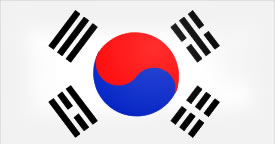

Who Can Benefit from Tang Soo Do?
Everyone and anyone will reap rewards from Tang Soo Do practice. Children develop concentration and confidence, which helps them in school. Teens experience a sense of pride in themselves to stand up for what is right, even when faced with conflicting moral values, temptations, and peer pressure. Adults find that Tang Soo Do allows them to advance at their own pace, handle daily stress, and feel years younger. Everyone sets his or her own personal goals of achievement in order to become a well developed, graceful and fulfilled individual.
Martial Arts started to develop over 1 million years ago. This was an instinct, not a conscious act. Over the centuries, the martial arts were refined and modified to fit the needs and environment of individuals. It should be noted that martial arts developed in all areas of the world as primitive people needed them. The following are a few example.
Egypt - Sebekkha
Greece - Pankaration, Boxing, Wrestling
China - Wu Shu
Korea - Tang Soo Do, Kwon Pup
Japan - Ju Jitsu, Te
Korean martial arts were greatly influenced by China, yet they developed their own characteristics, which made them uniquely Korean. During the time of the Three Kingdoms (between 5th & 7th century) Korea was divided into three nations: Koguryo, Paekche, and Silla. Silla was forced to become the predominant power between 57 BC and 935 AD because of its location between Japan, Paekche, and Koguryo. In order to defend itself, one of the Silla Kings, Chinhung Wang, developed an army of young aristocrats called Hwa Rang (The Flowering Youth), not to be confused with the modern Korean martial art with a similar name. These warriors traveled to China to studt Buddism and the methods of fighting used by the Tang dynasty. Once they returned to Korea, they not only defended their nation but set an example for the common man.
There is proof that the Tang method existed in Korea at this time as evidenced by various statues and murals found in tombs along the Aproh River. Some of these artifacts can be dated as far back as 1,500 years.
During the Ko Ryo dynasty (935 - 1392) martial arts reached new levels of popularity. As a response to this interest many martial arts books were written at this time. It is also known that the royal military used Tang Soo Do during this period.
During the Yi dynasty (1392 - 1907) martial arts were not simply thought of as mere physical fighting skills, but as a way of thinking and a way of life that required strict discipline. This is a system of training involving both the mind and the body. Great emphasis was placed on the trainee’s moral character. During this time a most important martial arts book was written. This first complete martial arts book was called Mooyae Dobo Tongji (1790)
At the end of the Yi dynasty, a fighting style called Tae Kyun developed. This is not considered a true martial art because it lacked mental discipline. Tae Kyun received a bad reputation as a fighting style because criminals practiced it. Tae Kyun is still practiced today and is not to be confused with Tae Kwon Do. However, during the Yi Dynasty martial arts declined and the dynastic policy of favoring the arts and despising arms.
From 1907 -1945, Korea was under Japanese domination. During this time all native martial arts were restricted. Many masters fled to China or they continued to practice in secret. One of these Masters, Hwang Kee went into hiding in China. While there, he studied under several Chinese masters. Returning to Korea after WWII, Hwang Kee created a new style by blending native Tae Kyun kicks with arts he learned while living in China. He named this new style Tang Soo Do Moo Duk Kwan. This new style was named after the ancient art that was practiced in Korea’s past. At the end of WWII, several schools opened.
Moo Duk Kwan - The School of Martial Virtue by Hwang Kee
Yon Moo Kwan by Chon Sang Sup
Chung Do Kwan by Won Kuk Lee
Song Moo Kwan by Wo Byong Jik
In the years that followed, the Korean government tried to unite these new styles under one name and government body. The result was the creation of Tae Kwon Do. However, Hwang Kee argued that Tang Soo Do was unique and therefore should remain independent of the government. After many years of legal battles against Korean government, Tang Soo Do and the Korean Tang Soo Do Association were found to be independent of the government and Tae Kwon Do. The chairman of the Korean Tang Soo Do Association was Hwang Kee. Tang Soo Do quickly spread across the world. One of these master was Chong Su Kim who in 1986 created the Pan Am Tang Soo Do Federation.



